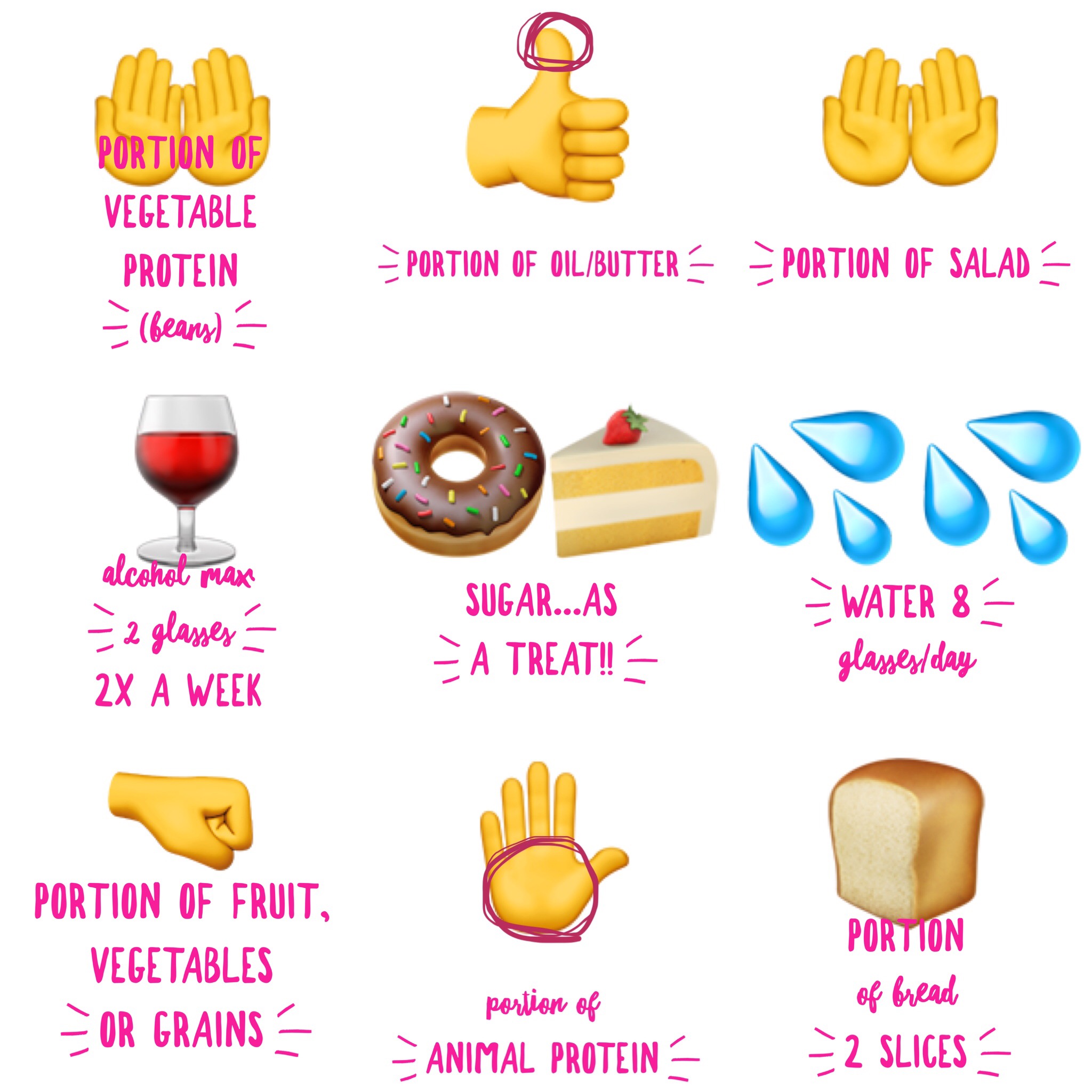
After years of clarifying in clinic how big a portion of protein, carbs, vegetables or fat, I thought it might be a good idea to write up a little advice on how to measure your portions.
Mainly because using the right portions of each foods per meal, you can very easily balance your meals to make them more nutritious, make your energy levels more steady throughout the day and balance your blood sugar.
Also, understanding what a portion of each type of food looks like, can help you control your calorie intake.
I could tell you to count pieces of fruit and veg or to weight your fish or chicken, but we are all perfectly equipped with and inbuilt measuring device…our hands! Yes, seriously and since the size of our hands correlates with the size of our bodies, this measuring method allows you to easily calculate portions for children too.
A portion of cooked vegetables like roasted carrots, peas, green beans or broccoli, is about the size of your closed fist. And of those you need 2 to 3 per meal…

A portion of salad (raw leafy veg like lettuce, spinach, radicchio) equals to what you can hold in your cupped hands held together. I know it’s bigger than a potion of cooked veg, because raw veggies take up more space!

A portion of fruit is about the size of your closed fist too: about an orange, a medium sized apple, a banana or approx 15 grapes.

A portion of animal protein should be the same size as the palm of your hand but a little more should be all right too: a medium chicken breast, a chicken leg, a couple of eggs, a regular sized burger, etc. Same applies to tofu. As you can see a sirloin steak may be a “little” over a portion, which should be fine once in a while if you add more veg to that meal.

Beans or pulses are good sources of veggie protein but since their protein content is lower, you’d need a larger serving…. your cupped hands together.

Carbs are next, with a portion of brown rice, wholemeal pasta, quinoa, potatoes or buckwheat noodles being the size of your closed fist.

Fats also have portions but a lot smaller that the above macronutrients. Oils and butter for cooking or dressing your veg or salads amount to the tip of your thumb per portion. So does cheese although we tend to be more generous since it contains protein too.

Dairy is an interesting one as can count as fat (butter), protein (yogurt) or both (cheese)! Milk is rather watery so it doesn’t contain all that much protein and little fat if it is not full fat.
To sum it all up, you can download this pic to have on your phone:

A well balanced diet should include
2-3 portions of veg or salad  1 portion of protein (animal or veggie)
1 portion of protein (animal or veggie)

1-2 portions of carbs – and if you are on a paleo, add the carb potions to your veg!

1 portion of fats 1-2 portions of fruit a day (not per meal!)
1-2 portions of fruit a day (not per meal!)

8 glasses of water a day (not per meal!)
 And how about the “naughty” stuff? Moderation is the key, as always….
And how about the “naughty” stuff? Moderation is the key, as always….


And to sum it all up, you can download this snapshot to keep handy when building your perfectly balanced meals:

Hope this all makes sense but if it doesn’t or you have any questions, please get in touch!